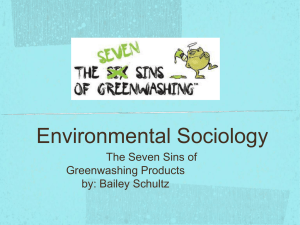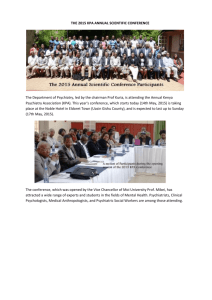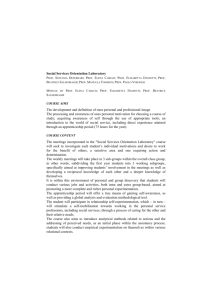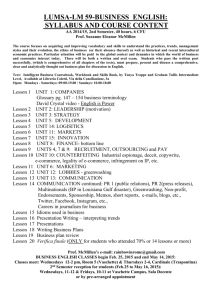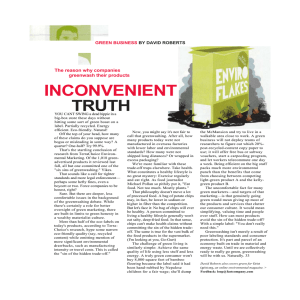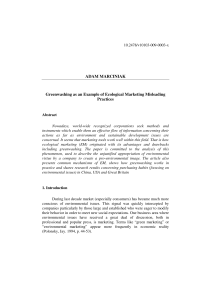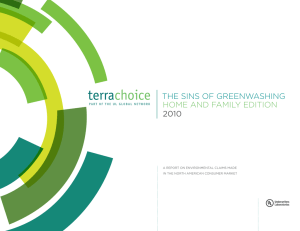Business communication
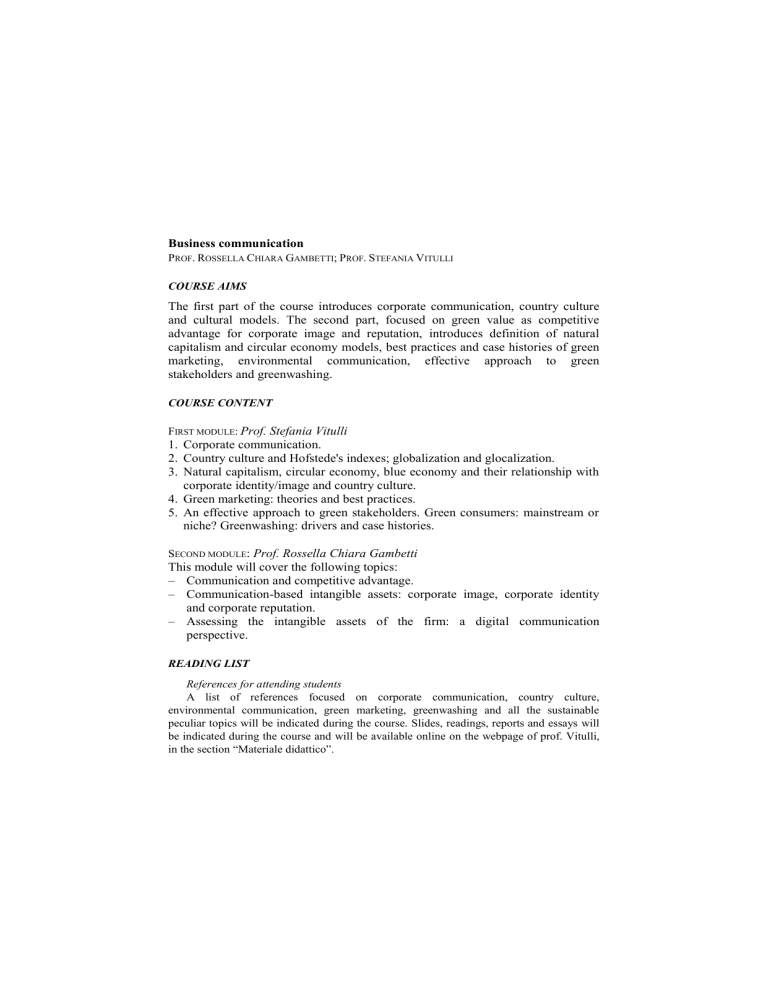
Business communication
P
ROF
.
R
OSSELLA
C
HIARA
G
AMBETTI
; P
ROF
.
S
TEFANIA
V
ITULLI
COURSE AIMS
The first part of the course introduces corporate communication, country culture and cultural models.
The second part, focused on green value as competitive advantage for corporate image and reputation, introduces definition of natural capitalism and circular economy models, best practices and case histories of green marketing, environmental communication, effective approach to green stakeholders and greenwashing.
COURSE CONTENT
F IRST MODULE : Prof. Stefania Vitulli
1. Corporate communication.
2. Country culture and Hofstede's indexes; globalization and glocalization.
3. Natural capitalism, circular economy, blue economy and their relationship with corporate identity/image and country culture.
4. Green marketing: theories and best practices.
5. An effective approach to green stakeholders. Green consumers: mainstream or niche? Greenwashing: drivers and case histories.
S ECOND MODULE
: Prof. Rossella Chiara Gambetti
This module will cover the following topics:
– Communication and competitive advantage.
– Communication-based intangible assets: corporate image, corporate identity and corporate reputation.
– Assessing the intangible assets of the firm: a digital communication perspective.
READING LIST
References for attending students
A list of references focused on corporate communication, country culture, environmental communication, green marketing, greenwashing and all the sustainable peculiar topics will be indicated during the course. Slides, readings, reports and essays will be indicated during the course and will be available online on the webpage of prof. Vitulli, in the section “Materiale didattico”.
Professor Gambetti will provide a list of references and other bibliographic materials at the beginning of the second module. Materials will be uploaded on the webpage of prof.
Gambetti, in the section “Materiale didattico”.
References for non attending students
R.
G AMBETTI -S.
Q UIGLEY
(eds), Managing corporate communication: a cross-cultural approach,
Palgrave MacMillan, London, 2012 (Chapters 1, 2, 4, 6, 8, 9, 10, 12, 13, 14, 16, 20).
E.T.
B RIOSCHI ( a cura di ), International Communication. A spatial projection of total business communication, Vita e Pensiero, Milano, 2015. (Introduzione. Capitoli I.3; II.1, II.2).
J.A.
O TTMAN , The New Rules of Green Marketing, Berrett-Koehler Pub. Inc, San Francisco, 2011.
TEACHING METHOD
This course is expected to be highly interactive. Students are expected to proactively contribute to class discussion and to the building of concepts step by step, with role playing in case study analysis, essays presentations and group discussions.
Some business communication experts working either in the company or in the communication agency field will be invited as guest speakers to provide their points of view on the current corporate communication and sustainability challenges.
ASSESSMENT METHOD
The final grade will consist of four parts:
As for Professor Vitulli’s module:
– Midterm Exam 15% of the final grade.
– Group assignment 25% of the final grade.
– Final Exam 40% of the final grade.
As for Professor Gambetti’s module, the evaluation will be based on a group in-class presentation relevant to a desk analysis of digital corporate communication artifacts to grasp corporate identity and corporate reputation dimensions: 20% of the final grade.
NOTES
No preliminary knowledge is required to attend the course.





